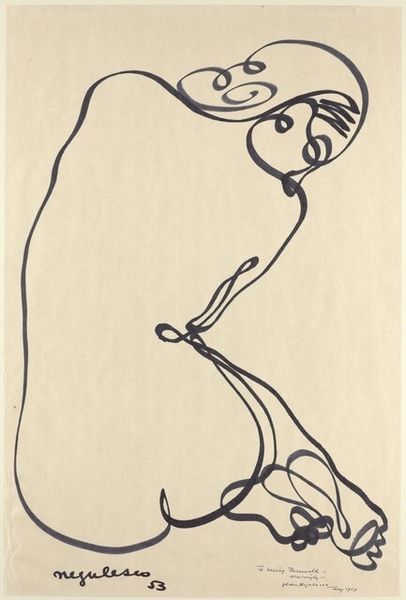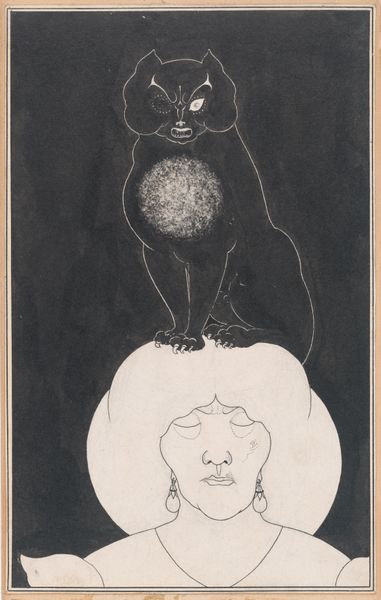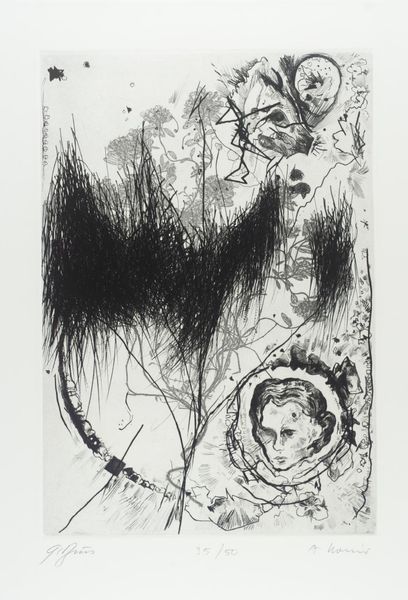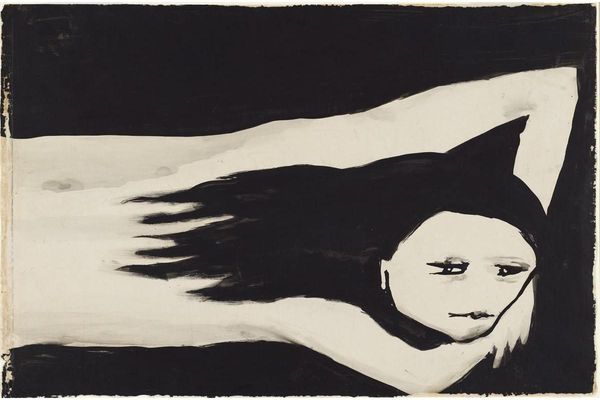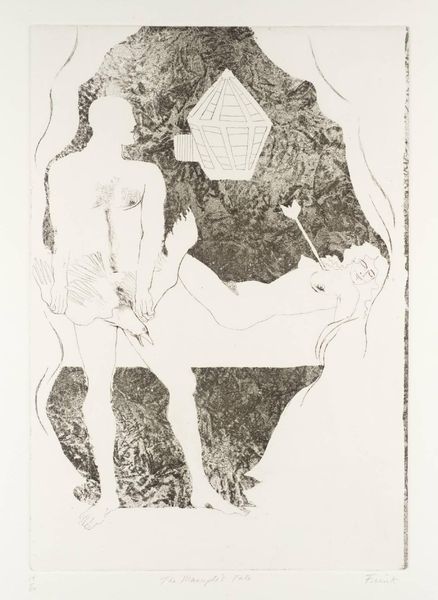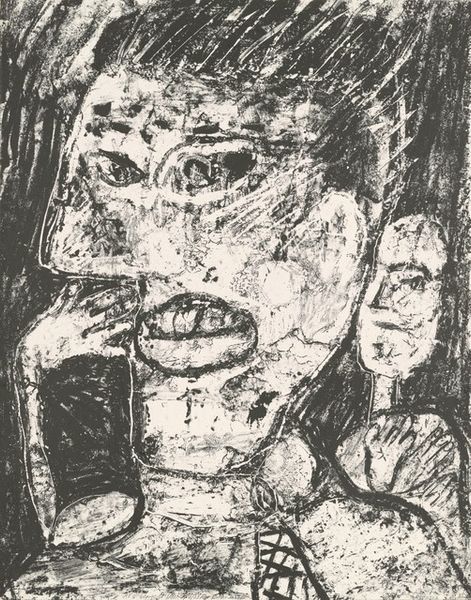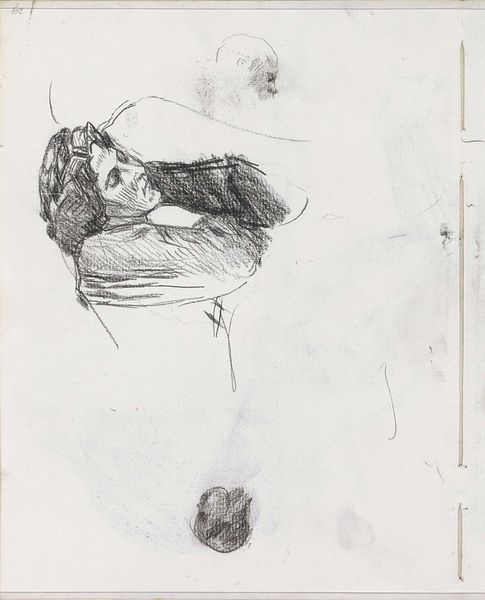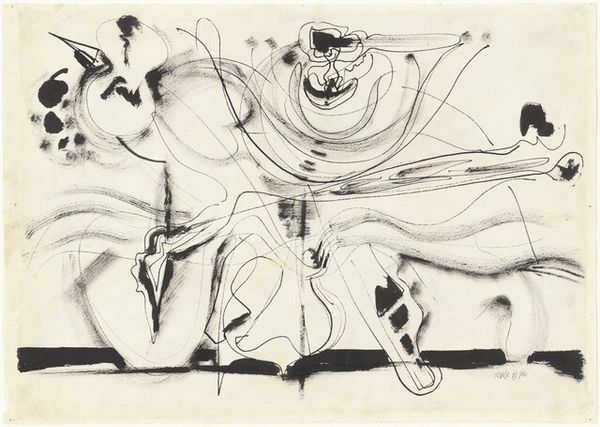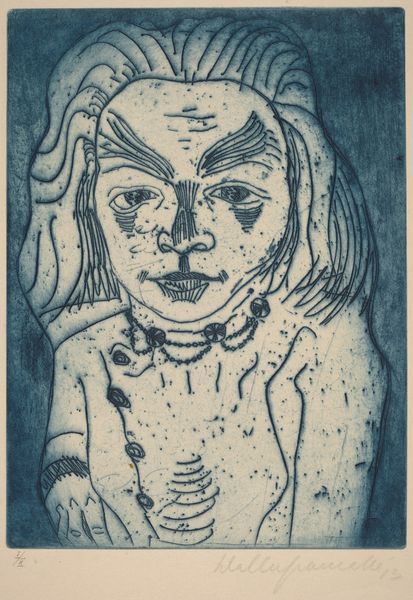
drawing, ink
#
portrait
#
drawing
#
self-portrait
#
death
#
caricature
#
figuration
#
ink
#
abstraction
#
portrait drawing
Copyright: Louise Bourgeois,Fair Use
Editor: This is Louise Bourgeois' "Birth", a 1994 drawing in ink. I'm struck by its directness. The figure seems vulnerable, yet powerful. What do you see in this piece? Curator: I see a powerful statement about the complexities of female identity. Bourgeois, throughout her career, used her art to explore themes of trauma, sexuality, and family relationships, particularly the role of the mother. This drawing isn’t simply a biological depiction of childbirth, it’s a visceral exploration of the psychological weight associated with it. Do you notice how the figures blend? Editor: Yes, there's a merging of faces and bodies that’s almost unsettling. It’s like the figures are becoming one another, even reversing positions. Curator: Precisely. This blurring speaks to the dissolution of individual boundaries that often happens in motherhood. The work also alludes to mortality, the reciprocal relationship of the parent, of one becoming the other, so how might we read this in the context of second wave feminism? The blurring boundaries, does this align or conflict with feminist themes? Editor: Well, it seems like a complicated depiction of those themes... It simultaneously shows how motherhood can dissolve identity while illustrating the strength inherent in the experience of birth, something unique to women's bodies. Curator: I agree. It's a complicated dialogue! And by engaging with such complex themes through an almost brutally honest visual language, Bourgeois forces us to confront uncomfortable truths about women’s lived realities. It rejects the patriarchal narratives. It is important not to separate from the male narratives, but in her work it is all about womanhood, female identity and a unique feminist point of view. Editor: I’m seeing so much more now! It’s like Bourgeois is reclaiming a narrative and sharing the visceral aspect of this life stage, something that transcends time. Curator: Exactly. And situating that in broader historical and theoretical contexts enables a far deeper experience of art and our selves.
Comments
No comments
Be the first to comment and join the conversation on the ultimate creative platform.

